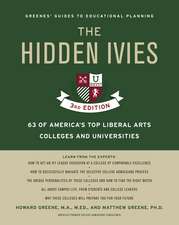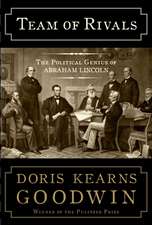The Miraculous Journey of Edward Tulane
Autor Kate DiCamillo Ilustrat de Bagram Ibatoullineen Limba Engleză Paperback – 7 dec 2015 – vârsta de la 7 până la 10 ani
Vezi toate premiile Carte premiată
Once, in a house on Egypt Street, there lived a china rabbit named Edward Tulane. The rabbit was very pleased with himself, and for good reason: he was owned by a girl named Abilene, who adored him completely. And then, one day, he was lost. . . .
Kate DiCamillo takes us on an extraordinary journey, from the depths of the ocean to the net of a fisherman, from the bedside of an ailing child to the bustling streets of Memphis. Along the way, we are shown a miracle that even a heart of the most breakable kind can learn to love, to lose, and to love again.
Featuring black-and-white illustrations and a refreshed cover by Bagram Ibatoulline."
| Toate formatele și edițiile | Preț | Express |
|---|---|---|
| Paperback (4) | 50.87 lei 3-5 săpt. | +8.54 lei 7-13 zile |
| Candlewick Press (MA) – 7 dec 2015 | 50.87 lei 3-5 săpt. | +8.54 lei 7-13 zile |
| Walker Books Ltd. – 5 mar 2015 | 50.96 lei 3-5 săpt. | +7.85 lei 7-13 zile |
| Gale, a Cengage Group – 10 feb 2020 | 73.97 lei 3-5 săpt. | |
| Candlewick Press (MA) – 30 iun 2009 | 88.84 lei 3-5 săpt. | |
| Hardback (1) | 120.19 lei 3-5 săpt. | |
| Candlewick Press (MA) – 31 ian 2006 | 120.19 lei 3-5 săpt. |
Preț: 50.87 lei
Nou
9.73€ • 10.16$ • 8.06£
Carte disponibilă
Livrare economică 15-29 martie
Livrare express 01-07 martie pentru 18.53 lei
Specificații
ISBN-10: 0763680907
Pagini: 240
Dimensiuni: 130 x 193 x 18 mm
Greutate: 0.18 kg
Editura: Candlewick Press (MA)
Descriere
A classic tale by Newbery Medalist Kate DiCamillo, America s beloved storyteller
Once, in a house on Egypt Street, there lived a china rabbit named Edward Tulane. The rabbit was very pleased with himself, and for good reason: he was owned by a girl named Abilene, who adored him completely. And then, one day, he was lost. . . .
Kate DiCamillo takes us on an extraordinary journey, from the depths of the ocean to the net of a fisherman, from the bedside of an ailing child to the bustling streets of Memphis. Along the way, we are shown a miracle that even a heart of the most breakable kind can learn to love, to lose, and to love again.
Featuring black-and-white illustrations and a refreshed cover by Bagram Ibatoulline."
Notă biografică
BAGRAM IBATOULLINE is the illustrator of CROSSING by Philip Booth; THE NIGHTINGALE by Hans Christian Andersen, retold by Stephen Mitchell; THE ANIMAL HEDGE by Paul Fleischman; HANA in the TIME of the TULIPS by Deborah Noyes; and THE SERPENT CAME to GLOUCESTER by M. T. Anderson. He says, "It was a singular and most pleasurable experience to work on the illustrations for EDWARD TULANE and to be there with him on his journey. I must admit, I'm a bit wistful now that I've come to the end of this very special book."
Extras
Once, in a house on Egypt Street, there lived a rabbit who was made almost entirely of china. He had china arms and china legs, china paws and a china head, a china torso and a china nose. His arms and legs were jointed and joined by wire so that his china elbows and china knees could be bent, giving him much freedom of movement.
His ears were made of real rabbit fur, and beneath the fur, there were strong, bendable wires, which allowed the ears to be arranged into poses that reflected the rabbit's mood - jaunty, tired, full of ennui. His tail, too, was made of real rabbit fur and was fluffy and soft and well shaped.
The rabbit's name was Edward Tulane, and he was tall. He measured almost three feet from the tip of his ears to the tip of his feet; his eyes were painted a penetrating and intelligent blue.
In all, Edward Tulane felt himself to be an exceptional specimen. Only his whiskers gave him pause. They were long and elegant (as they should be), but they were of uncertain origin. Edward felt quite strongly that they were not the whiskers of a rabbit. Whom the whiskers had belonged to initially - what unsavory animal - was a question that Edward could not bear to consider for too long. And so he did not. He preferred, as a rule, not to think unpleasant thoughts.
Edward's mistress was a ten-year-old, dark-haired girl named Abilene Tulane, who thought almost as highly of Edward as Edward thought of himself. Each morning after she dressed herself for school, Abilene dressed Edward.
The china rabbit was in possession of an extraordinary wardrobe composed of handmade silk suits. . . . Each pair of well-cut pants had a small pocket for Edward's gold pocket watch. Abilene wound this watch for him each morning.
"Now, Edward," she said to him after she was done winding the watch, "when the big hand is on the twelve and the little hand is on the three, I will come home to you."
She placed Edward on a chair in the dining room and positioned the chair so that Edward was looking out the window and could see the path that led up to the Tulane front door. Abilene balanced the watch on his left leg. She kissed the tips of his ears, and then she left and Edward spent the day staring out at Egypt Street, listening to the tick of his watch and waiting.
Of all the seasons of the year, the rabbit most preferred winter, for the sun set early then and the dining-room windows became dark and Edward could see his own reflection in the glass. And what a reflection it was! What an elegant figure he cut! Edward never ceased to be amazed at his own fineness.
In the evening, Edward sat at the dining-room table with the other members of the Tulane family: Abilene; her mother and father; and Abilene's grandmother, who was called Pellegrina. True, Edward's ears barely cleared the tabletop, and true also, he spent the duration of the meal staring straight ahead at nothing but the bright and blinding white of the tablecloth. But he was there, a rabbit at the table.
Abilene's parents found it charming that Abilene considered Edward real, and that she sometimes requested that a phrase or story be repeated because Edward had not heard it.
"Papa," Abilene would say, "I'm afraid that Edward didn't catch that last bit."
Abilene's father would then turn in the direction of Edward's ears and speak slowly, repeating what he had just said for the benefit of the china rabbit. Edward pretended, out of courtesy to Abilene, to listen. But, in truth, he was not very interested in what people had to say. And also, he did not care for Abilene's parents and their condescending manner toward him. All adults, in fact, condescended to him.
Only Abilene's grandmother spoke to him as Abilene did, as one equal to another. Pellegrina was very old. She had a large, sharp nose and bright, black eyes that shone like dark stars. It was Pellegrina who was responsible for Edward's existence. It was she who had commissioned his making, she who had ordered his silk suits and his pocket watch, his jaunty hats and his bendable ears, his fine leather shoes and his jointed arms and legs, all from a master craftsman in her native France. It was Pellegrina who had given him as a gift to Abilene on her seventh birthday.
And it was Pellegrina who came each night to tuck Abilene into her bed and Edward into his.
"Will you tell us a story, Pellegrina?" Abilene asked her grandmother each night.
"Not tonight, lady," said Pellegrina.
"When?" asked Abilene. "What night?"
"Soon," said Pellegrina. "Soon there will be a story."
And then she turned off the light, and Edward and Abilene lay in the dark of the bedroom.
"I love you, Edward," Abilene said each night after Pellegrina had left. She said those words and then she waited, almost as if she expected Edward to say something in return.
Edward said nothing. He said nothing because, of course, he could not speak. He lay in his small bed next to Abilene's large one. He stared up at the ceiling and listened to the sound of her breath entering and leaving her body, knowing that soon she would be asleep. Because Edward's eyes were painted on and he could not close them, he was always awake.
Sometimes, if Abilene put him into his bed on his side instead of on his back, he could see through the cracks in the curtains and out into the dark night. On clear nights, the stars shone, and their pinprick light comforted Edward in a way that he could not quite understand. Often, he stared at the stars all night until the dark finally gave way to dawn.
_______
THE MIRACULOUS JOURNEY OF EDWARD TULANE by Kate DiCamillo. Text copyright © 2006 by Kate DiCamillo. Published by Candlewick Press, Inc., Cambridge, MA.
Premii
- Volunteer State Book Awards Nominee, 2007
- Parents Choice Award (Spring) (1998-2007) Winner, 2006
- Midwest Booksellers' Choice Award Winner, 2006
- Quill Awards Nominee, 2006
- Grand Canyon Reader Award Winner, 2008
- Rebecca Caudill Young Readers Book Award Nominee, 2008
- Pennsylvania Young Reader's Choice Award Nominee, 2008
- Boston Globe-Horn Book Awards Winner, 2006
- Sunshine State Young Reader's Award Winner, 2008
- Keystone to Reading Book Award Nominee, 2008
- Colorado Children's Book Award Nominee, 2008
- Christopher Awards Winner, 2007
- Iowa Children's Choice (ICCA) Award Nominee, 2007
- Kentucky Bluegrass Award Winner, 2007
- Capitol Choices: Noteworthy Books for Children and Teens Recommended, 2007
- Charlie May Simon Children's Book Award Winner, 2008
- South Carolina Childrens, Junior and Young Adult Book Award Nominee, 2008
- Beehive Awards Winner, 2008
- Golden Archer Award Nominee, 2009
- Young Reader's Choice Award Winner, 2009























